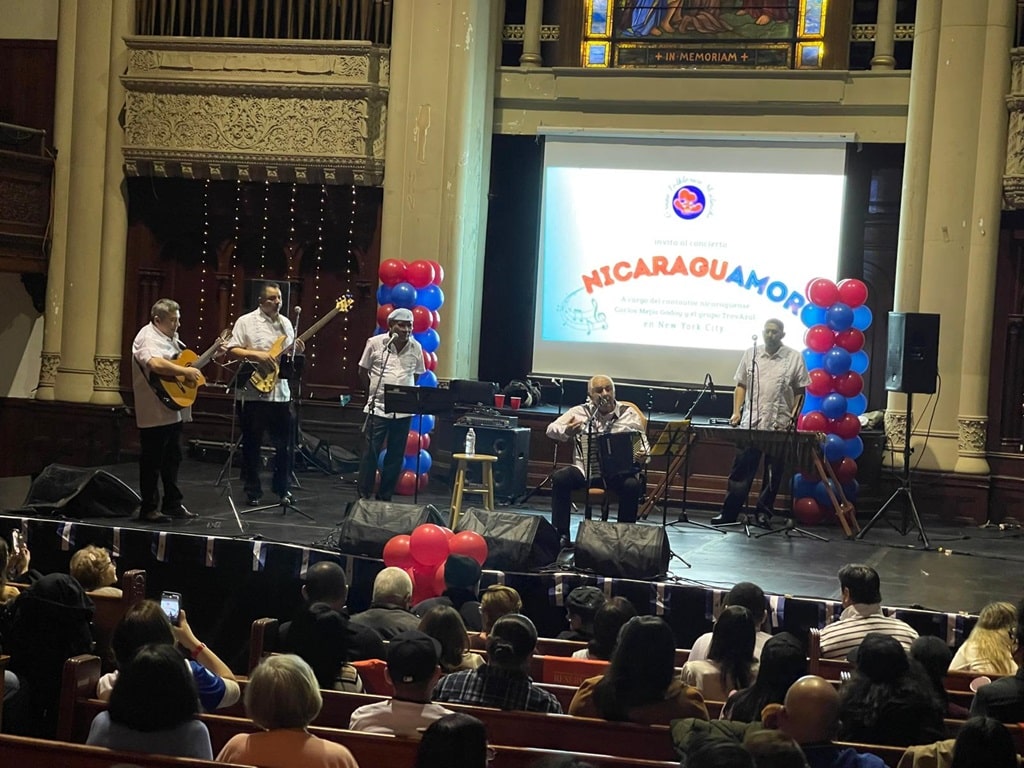10 de octubre 2023

“NicaraguAmor” Cultural Caravan for Nicaraguans in the USA

PUBLICIDAD 1M
PUBLICIDAD 4D
PUBLICIDAD 5D
Andrés Manuel López Obrador said he invited heads of state of the countries of origin and transit of migrants in the continent, but omitted Nicaragua

Mexico's President Andres Manuel Lopez Obrador speaks during his morning press conference at the National Palace in Mexico City, Mexico. EFE/José Méndez
Mexican President Andres Manuel Lopez Obrador announced that he will meet on October 22 with the presidents of countries of migrants origin in the continent and those who are part of the route taken by thousands of people seeking to reach mainly the United States. However, despite being a country of origin and transit, the president did not mention Nicaragua.
The meeting will be held on Sunday, October 22, in Palenque, Chiapas, according to Lopez Obrador’s statements during one of his morning press conferences on Monday, October 9.
“I am inviting the Presidents of Ecuador, Colombia, El Salvador, Honduras, Guatemala, Venezuela, Haiti, Cuba, Costa Rica, Panama, and the Prime Minister of Belize because they are the countries that have more influence in everything related to migration. Either because it is their people, the inhabitants of their countries, who are emigrating or, as in the case of Costa Rica, Panamá, and Mexico —even in the case of Colombia–, they are countries through which migrants pass. Yes, the migratory influx, the migratory flow, has grown a lot,” said Lopez Obrador.
He did not mention Nicaragua, even though, in the same conference, Lopez Obrador showed current figures on the passage of migrants through Mexico, among which it was read that “nationals from Cuba, Haiti, Nicaragua, and Venezuela, together with Colombia and Ecuador, represent 40% of the irregular flow of migrants.”
The Mexican President said the meeting will be held on his initiative to address the migratory crisis. “We are going to present a proposal to see if we can reach an agreement, which will help a lot because we cannot stay with our arms crossed. The migratory flow is growing a lot,” he insisted.
Lopez Obrador commented that most presidents have already confirmed their attendance at the October 22 meeting. “I only need to speak with the presidents of Guatemala and Colombia. All the others have confirmed that they will attend, and we will try, among ourselves…it is like a good neighborly agreement against poverty…to seek that, with mutual help, we can address the migration problem.”
Lopez Obrador emphasized that one of the issues will be how to prevent people from having to leave their countries. “The approach is what can we do to provide attention to the people in the country of origin, those who decide to leave out of necessity. How do we guarantee that there is work, that there is welfare in the people of our countries to defuse, to reduce the migratory flow, not just thinking about coercive measures, checkpoints, walls, militarizing the borders,” he said, adding that if presidents invited could not attend the meeting, their respective foreign ministers would come instead.
During the conference, the Mexican President also said he would meet with US President Joe Biden in mid-November in San Francisco, California, to address the migration issue.
Nicaragua would be left out of the meeting despite the significant increase in migration to the United States in recent years, mainly to the United States.
According to US Customs and Border Patrol (CBP) figures 2021, 87,567 “encounters” or detentions of Nicaraguans were detected at the US-Mexico border. In 2022, there were 217,092, or 2.4 times more than the previous year.
With this sudden and sharp increase, the US government announced in early 2023 that it would no longer receive Nicaraguans seeking asylum at the border. Instead, it established a program known as “humanitarian parole” to allow Nicaraguans to apply for a visa that would enable them to live and work in that country for two years. Still, to apply, those interested must have a passport, pay for a plane ticket, and have a “sponsor” in the United States to make the request for the process.
Since the “humanitarian parole” began in January and until July 2023, 30,700 Nicaraguans emigrated under this program. To this figure, those Nicaraguans intercepted at the southern US border must be added: according to CBP, 41,026 Nicaraguans were “found” between January and August 2023. This means that, despite immigration restrictions, at least 71,726 Nicaraguans left their country for the United States.
This article was originally published in Spanish in Confidencial and translated by Havana Times.
PUBLICIDAD 3M
Periodista nicaragüense desde 2007, con experiencia en prensa escrita, televisión y medios digitales. Tiene una especialización en producción audiovisual y una maestría en Medios de Comunicación, Estudios de Paz y Conflicto de la Universidad para la Paz de las Naciones Unidas. Fundadora y editora de Nicas Migrantes, proyecto por el cual ganó el Impact Award 2022 del Departamento de Estado de EE. UU. Ha realizado coberturas in situ en Los Ángeles (Estados Unidos), México, El Salvador, Guatemala, Nicaragua y Costa Rica. También ha colaborado con France 24, The Guardian, Al Jazeera, BBC World Service. Ha sido finalista y ganadora de varios premios nacionales e internacionales, entre ellos el Premio Latinoamericano de Periodismo de Investigación Javier Valdez, del Instituto Prensa y Sociedad (IPYS), 2022.
PUBLICIDAD 3D